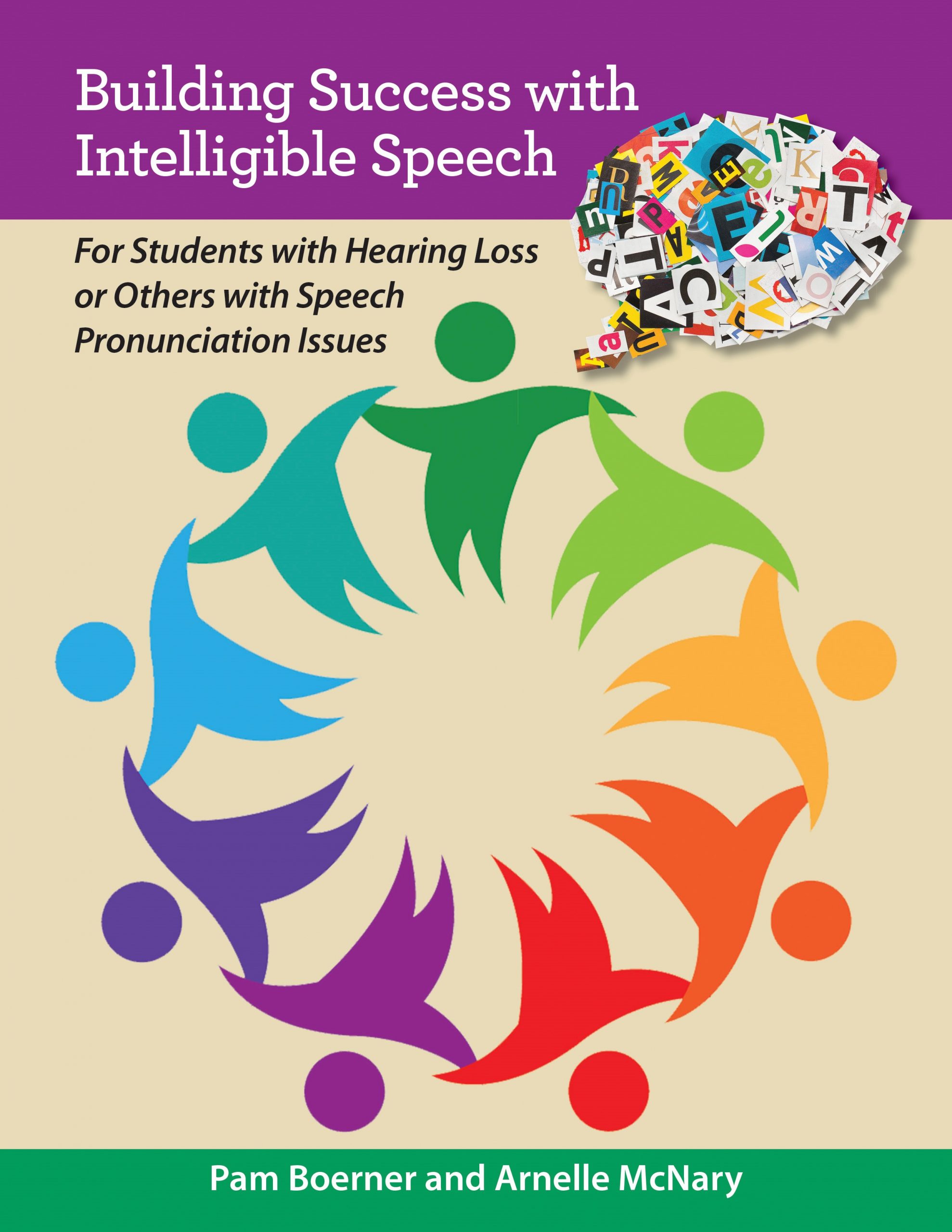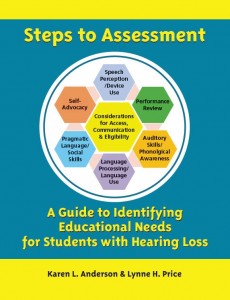Related Products
For Professionals
- Amplification
- Assessment of Student Skills, Challenges, Needs
- Early Childhood: Infants, Toddlers, Preschool
- Hearing Loss – Identification, Impact and Next Steps
- IDEA Law Summary Information
- Language and Speech Development Issues
- Legal Issues in Serving Children with Hearing Loss
- Listening (Auditory Skills) Development
- Planning to Meet Student Needs
- Self-Advocacy Skills for Students with Hearing Loss
- Self-Concept: How the Child with Hearing Loss Sees Himself
- Social Skills
- Speech Perception & Learning
Related Teacher Tools Takeout Items
Evaluation Considerations
It creates barriers to learning in the typical classroom environment and impacts social interactions. This invisible barrier is why it is necessary to consider functional performance in the classroom across situations. Hearing loss typically causes CUMULATIVE learning gaps due to incidental learning/overhearing deficits. Hard of hearing students are often ignored or their needs are minimized because they are not ‘Deaf enough’ and the behaviors associated with hearing loss look like other learning issues. The information below delineates what the school team must do when evaluating whether a child is eligible for specialized instruction, related services and supports/accommodations.
IDEA §300.304 Evaluation procedures
(b) Conduct of evaluation. In conducting the evaluation, the public agency must—
![]() (1) Use a variety of assessment tools and strategies to gather relevant functional, developmental, and academic information about the child, including information provided by the parent, that may assist in determining—
(1) Use a variety of assessment tools and strategies to gather relevant functional, developmental, and academic information about the child, including information provided by the parent, that may assist in determining—
(i) Whether the child is a child with a disability under §300.8; and
(ii) The content of the child’s IEP, including information related to enabling the child to be involved in and progress in the general education curriculum (or for a preschool child, to participate in appropriate activities);
(2) Not use any single measure or assessment as the sole criterion for determining whether a child is a child with a disability and for determining an appropriate educational program for the child; and
(3) Use technically sound instruments that may assess the relative contribution of cognitive and behavioral factors, in addition to physical or developmental factors.
(1) Assessments and other evaluation materials used to assess a child under this part— (iv) Are administered by trained and knowledgeable personnel;
(2) Assessments and other evaluation materials include those tailored to assess specific areas of educational need and not merely those that are designed to provide a single general intelligence quotient.
(3) Assessments are selected and administered so as best to ensure that if an assessment is administered to a child with impaired sensory, manual, or speaking skills, the assessment results accurately reflect the child’s aptitude or achievement level or whatever other factors the test purports to measure, rather than reflecting the child’s impaired sensory, manual, or speaking skills (unless those skills are the factors that the test purports to measure).
(6) In evaluating each child with a disability under §§300.304 through 300.306, the evaluation is sufficiently comprehensive to identify all of the child’s special education and related services needs, whether or not commonly linked to the disability category in which the child has been classified.
(7) Assessment tools and strategies that provide relevant information that directly assists persons in determining the educational needs of the child are provided.
(Authority: 20 U.S.C. 1414(b)(1)-(3),1412(a)(6)(B))
Gathering relevant functional and academic information – How are these defined?
 Academic achievement. According to the US Department of Education:
Academic achievement. According to the US Department of Education:
“Academic achievement” generally refers to a child’s performance in academic areas (e.g., reading or language arts, math, science, and history). We believe the definition could vary depending on a child’s circumstance or situation, and therefore, we do not believe a definition of “academic achievement” should be included in these regulations. (71 Fed. Reg. at 46662)
Functional performance. With respect to the meaning of “functional performance,” the Department of Education points to how the term is generally understood as referring to “skills or activities that are not considered academic or related to a child’s academic achievement.” This term “is often used in the context of routine activities of everyday living.” The reason that examples of functional skills were not included in IDEA was because “the range of functional skills is as varied as the individual needs of children with disabilities” (71 Fed. Reg. at 46661). [T]he evaluation procedures used to measure a child’s functional skills must meet the same standards as all other evaluation procedures [described in IDEA at §300.304(c)(1)]. (71 Fed. Reg. at 46661).
The “present levels” statement is intended to comprehensively describe a child’s abilities, performance, strengths, and needs. It is based on, and arises out of, all the information and data previously collected and known about the child, most especially the full and individual evaluation of the child that must be conducted in accordance with IDEA’s evaluation/eligibility provisions of §§300.301 through 300.311. A well-written present level will describe:
- the child’s strengths and weaknesses,
- what helps the child learn,
- what limits or interferes with the child’s learning,
- objective data from current evaluations of the child, and
- how the child’s disability affects his or her ability to be involved and progress in the general curriculum.
A fully developed, well-written “present levels” is the foundation upon which the rest of the IEP can be developed to specify appropriate goals, services, supports, accommodations, and placement for the child.
Source http://nichcy.org/schoolage/iep/iepcontents/present-levels


